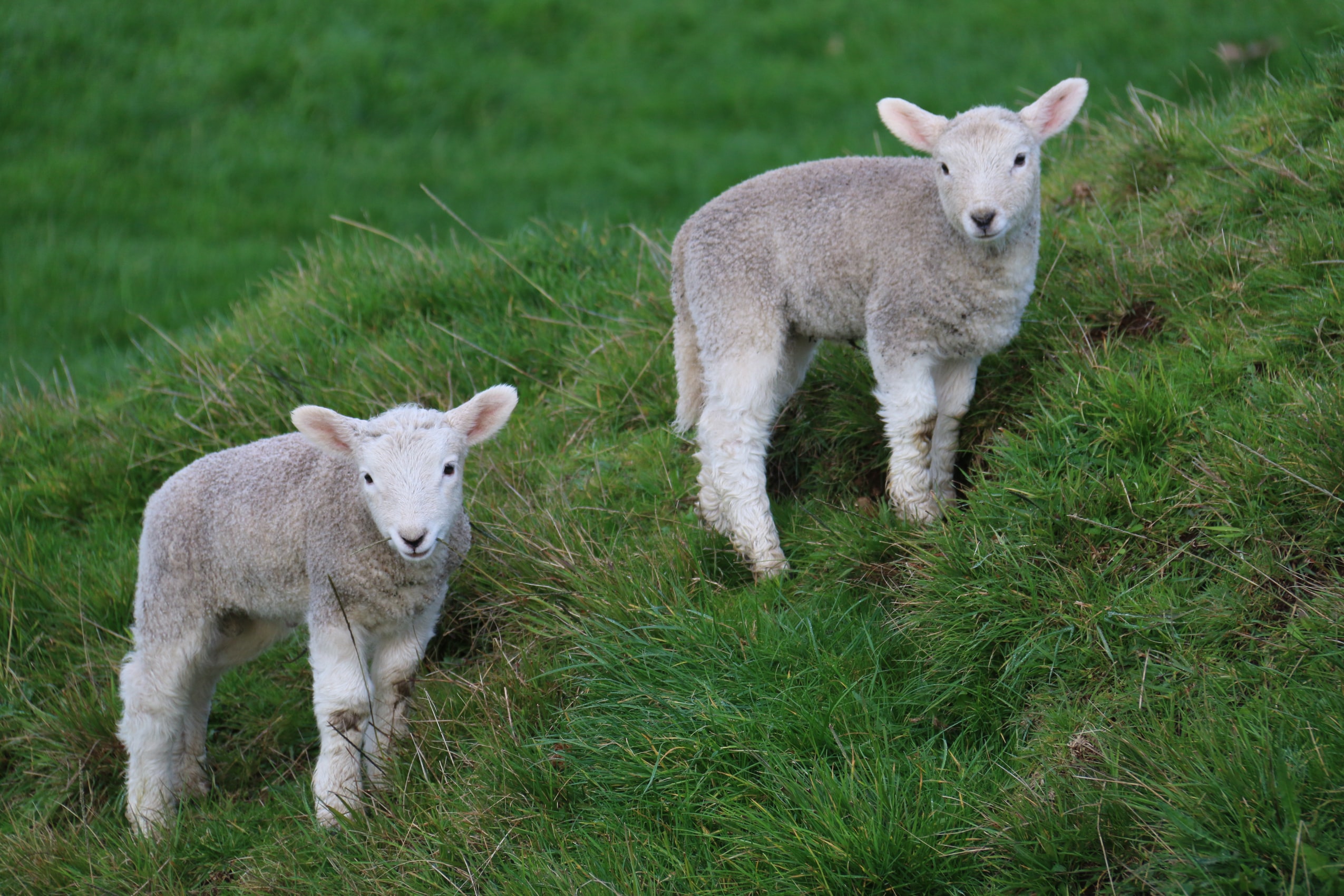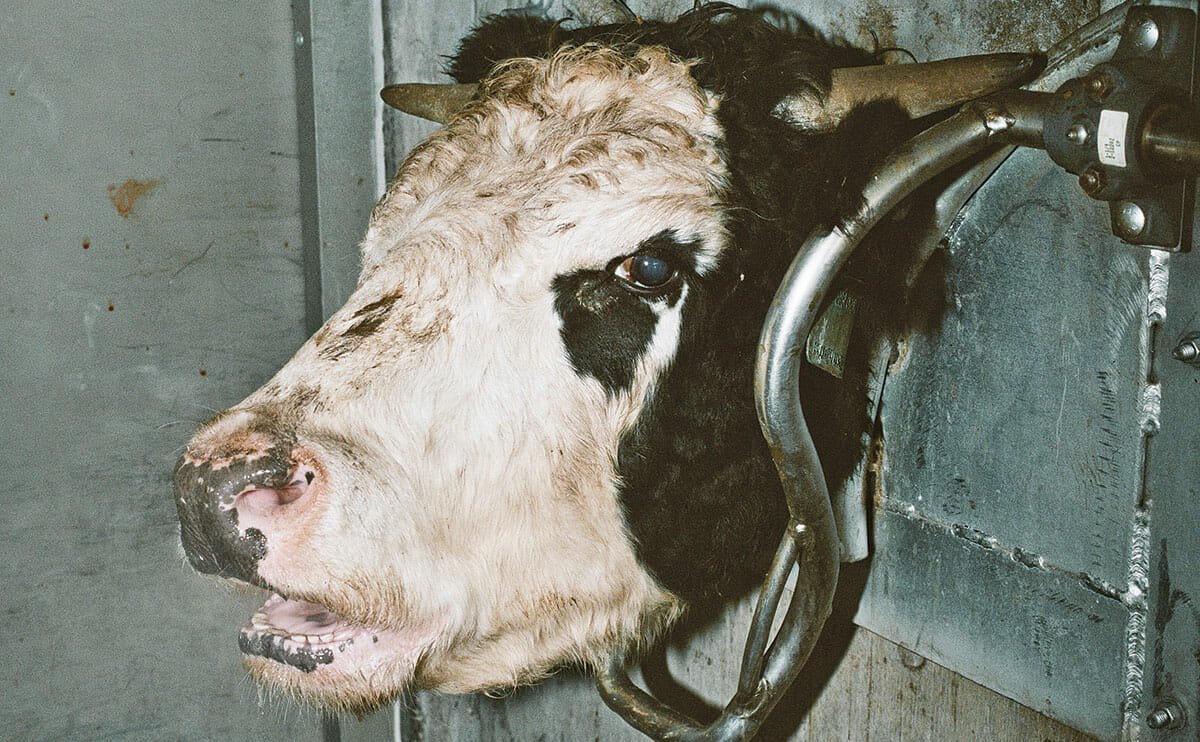News & Media > Editorials > What is RSPCA 'Humane Slaughter'?
What is RSPCA 'Humane Slaughter'?
 Regardless of stunning and slaughter methods, are you comfortable with your food and clothing being made from them?
Regardless of stunning and slaughter methods, are you comfortable with your food and clothing being made from them?
Animals are sentient beings who can suffer just as humans do. They have families and friends, they play and enjoy learning. In slaughterhouses many struggle desperately to escape death, fighting for their freedom until they are killed.

There are several slaughter methods endorsed by the RSPCA, which they label as humane. These practices are used widely throughout the meat, dairy, egg, leather, and wool industries.
 A chicken's last moments before they arrive at a slaughterhouse, where their life will be taken from them. Can this really ever be 'humane'?
A chicken's last moments before they arrive at a slaughterhouse, where their life will be taken from them. Can this really ever be 'humane'?
The definition of 'humane' is to show compassion and benevolence; kindness. You can decide for yourself if these RSPCA endorsed killings, detailed below, fit this description.
Killing Cattle
Cattle are killed for meat and leather, as well as within the dairy industry, where spent cows and male calves are killed because they will not produce milk and therefore have no economic value to farms.
Adult cattle and calves are stunned with a shot in the head from a captive bolt pistol, which pierces their brain. Calves are also commonly stunned by means of electric stunning. Next, their throats are cut open and their bodies are bled out. The RSPCA believes this is a ‘humane’ way to treat cattle.
Captive-bolt stunning has been found to be regularly ineffective; consequently many animals have been slaughtered while conscious and semi-conscious.
 A cow awaiting stunning in a knockbox.
A cow awaiting stunning in a knockbox.
More importantly though, these animals do not want to die. They feel fear in their last moments before their lives are taken from them.
Killing Sheep
In Australia, sheep and lambs are stunned by the use of a captive-bolt pistol, or most commonly, by shooting an electrical current through their brains. Following stunning, they have their throats sliced open and are hung up by their legs to have the blood drained from their body.
This method of stunning, like captive-bolt pistol, is not always effective. Electrical stunning never renders an animal permanently unconscious. If an animal regains consciousness before they are bled out, they will be conscious during their slaughter.
Sheep are killed both for their flesh, and in the wool industry, when they are no longer 'profitable'.
Killing Pigs
With the knowledge that pigs are some of the most intelligent animals, with cognitive abilities akin to that of a 4-year-old child, the pig slaughter industry introduced CO2 gas chambers to supposedly ‘humanely’ stun pigs.
In these gas chambers, pigs painfully burn from the inside out, thrashing and trying to escape for many minutes. Afterwards, they have their throats slashed open and are bled out.
The first part of this video is an RSPCA advertisement, and the second part is undercover footage exposing an RSPCA approved pig slaughterhouse.
Diamond Valley Pork, a Victorian pig abattoir, was RSPCA accredited at the time our campaign Gas Chambers was filmed and and released. Due to public pressure following the campaign release, their accreditation was said to be removed.
However, Diamond Valley Pork has since stated to Government that they are still approved to slaughter RSPCA approved pigs for pork consumption. RSPCA approved pork still allows for CO2 gassing of pigs, in group stunning systems, considering it 'humane slaughter'.
Killing Egg-Laying Hens
At 18 months of age, hens exploited for their eggs are killed as their production slows and therefore they are no longer considered to be useful to the industry.
Hens are slaughtered en masse, with the use of a gas chamber, much like pigs are slaughtered. Hens, however, are not bled out after they have been exposed to the CO2, often taking several minutes to die slowly from suffocation.
View the footage yourself to see how long the painful gas takes to kill hens.
Killing Broiler Chickens
RSPCA approved supposed ‘humane’ slaughter of broiler (meat) chickens also includes the use of CO2 gas chambers. Additionally, the RSPCA approves shackling chickens upside down by their feet, pulling them through an electrified body of water to render them unconscious, before they are decapitated by a mechanical blade.
The RSPCA says the below section of Dominion exposing this method of slaughter is 'humane', do you?
When pressing 'play' the video will begin from the relevant section
Killing Fish
The RSPCA endorse the percussive stunning of fish; this form of stunning is basically a heavy blow of blunt-force to the head of a fish in order to kill them.
New-born bobby calves are commonly killed with blunt force trauma to the head on farms in Australia, which, the RSPCA is inconsistently opposed to.
On-Farm Killing
When animals are slaughtered on-site at farms, rather than in an abattoir, the RSPCA believes the use of a rifle is a humane method to kill them, using the following techniques.
Frontal method – the firearm is directed at a point midway across the forehead where two lines from the top side of the base of the ears and top of the eyes intersect
Poll method (for horned animals) – the animal is shot through the skull just behind the base of the horns
Temporal method – the firearm is directed at a point midway between the eye and the base of the ear on the same side of the head
Watch footage from a Sentient exposé on Australian cattle ranches:
If these methods of killing were used to kill a dog or a cat, rather than a farmed animal, would we still consider these to be humane?
Would you think any needless killing of a dog or cat is acceptable? What about eating dogs and cats, when we can live happily and healthily without doing so?
Learn about the RSPCA's approved farms here.
What can we do?
Moving to a vegan life stops financially supporting food and fashion industries that profit from the brutal slaughter of animals. You can sign up to start your vegan journey at challenge22

 Farm Transparency Project (FTP)
Farm Transparency Project (FTP)

